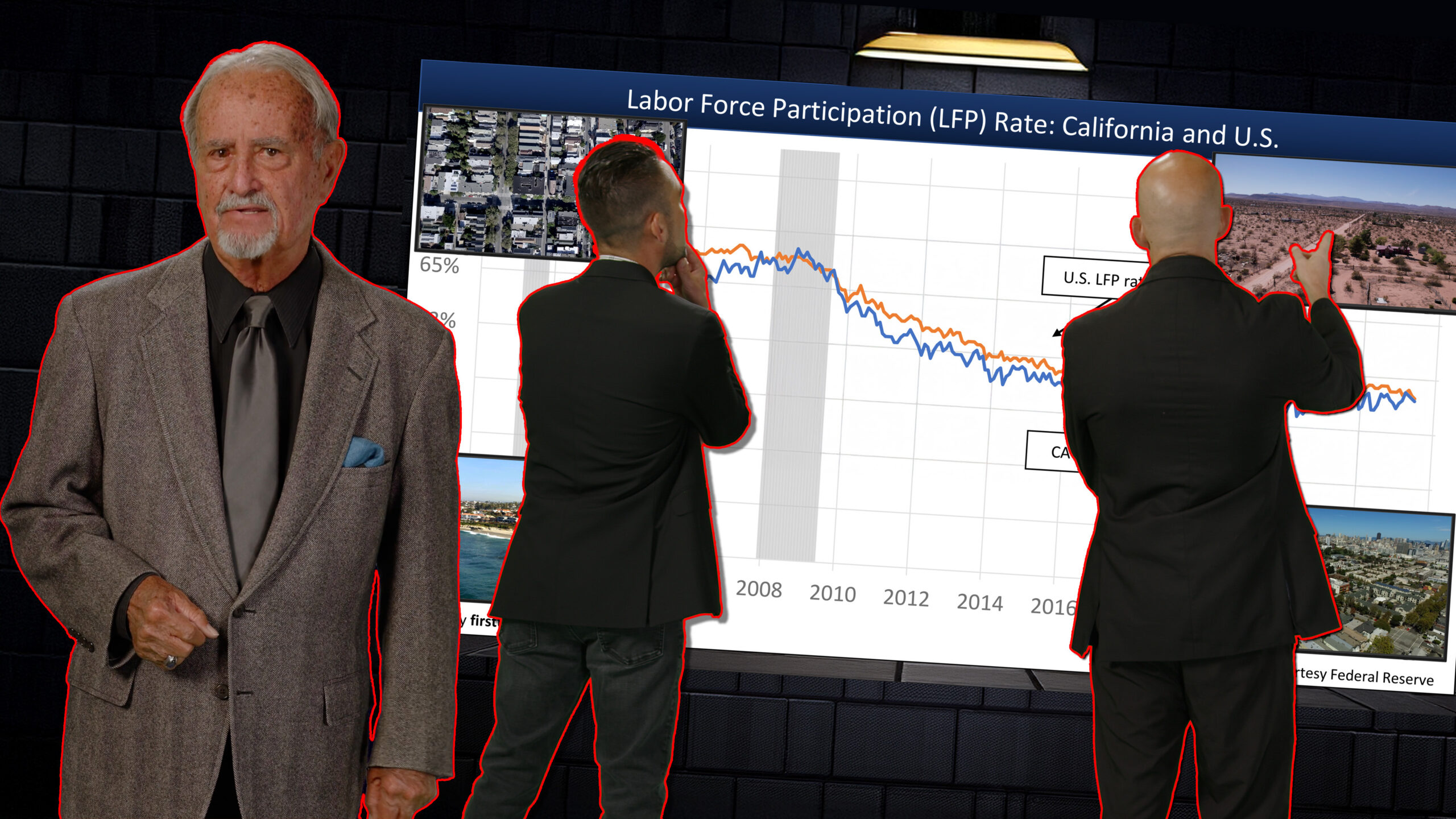C
alifornia’s labor force participation rate (LFP) measures the share of residents who are either working or actively job‑seeking. It is a barometer of the state’s economic health and the engine behind real‑estate activity. When people earn wages, they can afford to rent or buy homes, and each transaction generates broker commissions. Thus, the LFP, which includes the long‑term unemployed, is the foundation for both residential and commercial property markets.
The LFP peaked at 67 % in 2000 and has since slid. Aging demographics and recession shocks in 2009 and 2020 accelerated the decline, while the population itself contracts during downturns. Between recessions, California’s LFP typically trails the national average by about one percentage point. By 2025, the gap narrows: both California and the U.S. hover near 62 %. When people stop searching for work, the unemployment figure falls, but the real story is the number of employed residents. Those workers drive housing demand and corporate office space needs.
Employment in California rose from 17.7 million in December 2019 to a peak of 18.2 million in December 2024, but by June 2025 it has slipped to 18.1 million and is trending downward. Brokers who monitor these numbers can forecast market conditions more accurately than by watching unemployment alone, because only employed individuals generate income that fuels leases and mortgages.
Income is the key determinant of housing decisions. Households adjust rent or purchase budgets in response to wage changes. Economic expansion spurs new construction to meet rising demand, while job losses lower rents and sale prices, especially for lower‑ and middle‑income properties. Areas with higher LFP rates attract more tenants and buyers, boosting absorption rates and broker fees. Conversely, a sustained LFP dip reduces transaction volume, slows lease signings, and delays sales closures.
Mortgage qualification hinges on gross household income; the higher the earnings, the larger the loan a buyer can secure. Thus, employment levels directly influence the volume of financed purchases and the overall health of the real‑estate market.
Regional LFP trends help agents identify hot spots for activity. Branch offices that focus on areas with robust labor participation see higher turnover, more sales, and consequently greater fee income. In contrast, regions with sluggish LFP experience lower absorption, fewer transactions, and reduced earnings for brokers.
In short, a stable or rising LFP rate fuels stronger brokerage revenue streams. More employed residents mean more leases and sales, translating into higher commissions for real‑estate professionals.















